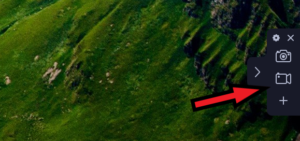Interview recording is becoming increasingly popular. The year of the pandemic has started the new remote work trend, and in 2020, there were 49% more online interviews than in 2011.
Since then, video interviews have become even more popular. In fact, 60% of HR managers use them as the primary option when talking to new candidates.
Knowing how to record an interview is a valuable skill. The recording will help you save the conversation and review it later. This article will guide you through the process of getting ready, recording, and transcribing your interviews.
Preparing for the Interview Recording
1. Check the Equipment
The type of equipment you choose will depend on the nature of your interview and your budget. At the very least, you’ll need a good quality microphone to capture the audio clearly. If you’re planning to record a video interview, a high-definition webcam is also necessary.
When preparing your equipment, don’t forget about backup devices. It’s always smart to have a backup microphone or camera just in case something goes wrong. Additionally, make sure all your equipment is fully charged and that you have spare batteries if needed.You can also try out an online screen recorder to make things a little easy for you.
Lastly, consider investing in quality headphones. Headphones allow you to monitor the audio quality in real time, ensuring that everything is being recorded clearly and without any disturbances.
2. Write Questions
The next step in preparing for your interview recording is to write out your questions. Start by identifying the purpose of your interview. What information do you hope to gather? What do you want your interlocutor to learn? These answers will guide your question writing process.
Make sure your questions are open-ended to encourage detailed responses. Avoid yes/no questions as they limit the amount of information you can gather. Also, try to order your questions logically, starting from general topics and gradually moving towards more specific ones.
Lastly, don’t forget to prepare follow-up questions. These are crucial for digging deeper and getting more detailed answers. Remember, though, that an interview is a conversation, not an interrogation. Be flexible and willing to deviate from your list if the discussion naturally goes in a different direction.
3. Find a Quiet Place
Background noise can be very distracting and can negatively impact the quality of your recording. Try to find a place that is free from noise distractions like traffic, construction, or people talking.
Also, consider the acoustics of your chosen location. Rooms with carpeting and soft furnishings are ideal as they absorb sound and prevent echo. Avoid rooms with hard surfaces as they can cause sound to bounce around, resulting in poor audio quality.
In case you can’t control the noise in your environment, consider investing in a directional microphone. These microphones are designed to pick up sound from a specific direction, helping to minimize background noise.
How to Record an Interview: 6 Easy Steps
In order to record an interview with high quality, it’s important to use a tool that is handy and will not break the bank at the same time. Movavi Screen Recorder is one of the best free video recording software that allows you to capture video from your screen with audio. So, here’s how to do it, if you want to give this tool a try:
- First, download Movavi Screen Recorder on your computer. Follow the instructions to install the software, and then launch it by double-clicking on its icon.
- Select the “Screen recording” option by clicking the video camera icon.

- Choose the area of your screen you want to record. If you’re conducting a video interview via Skype or Zoom, for instance, you’ll want to select the window where the video call is taking place.

- Next, check your audio settings. Make sure the “Microphone” and “System Audio” options are both enabled. This ensures that both your voice and the voice of your interviewee are being recorded.

- Finally, click the “REC” button to start recording. Once your interview is finished, click the “Stop” button.
- Now, you can preview and save your recording. Movavi Screen Recorder lets you trim and cut out unwanted parts, but for more advanced editing tools you will need to have a video editor installed on your computer as well.

- For export, you can choose between several output video formats: MP4, AVI, MOV, MKV, and WebM. You can also export the video directly to your Google Drive or share it via a generated link.

Tips for Recording Interviews
Recording interviews can be tricky, especially if you’re new to it. Here are some tips to ensure your interview recording goes smoothly.
First, always do a test recording before starting the actual interview. This allows you to check your equipment, sound levels, and overall setup. It’s much better to identify and fix issues before the interview than during it.
Second, try to make your interviewee feel comfortable. Many people get nervous when being recorded. Explain the process to them, assure them they can take breaks if needed, and encourage them to speak naturally.
Lastly, always get consent before recording an interview. This is not only courteous, but often, it’s also a legal requirement. More on this in the following section.
Legal Considerations When Recording Interviews
The laws regarding recording conversations vary greatly from one country to another, and sometimes even within different regions of the same country.
In general, most jurisdictions require at least one party’s consent to record a conversation. This is known as one-party consent. However, some places require the consent of all parties involved. This is known as two-party consent or all-party consent.
It’s crucial to research the laws in your specific location before recording an interview. When in doubt, always get explicit consent from your interviewee. This can be in the form of a signed release form or a verbal agreement at the start of the recording.
How to Transcribe Your Recorded Interviews
Once you’ve recorded your interview, you might want to transcribe it. Transcripts are useful for reviewing the information, referencing specific quotes, and creating written content like articles or reports.
Transcribing interviews can be time-consuming, but there are tools and services available to help. You can use transcription software, which automatically converts spoken words into written text. These tools are not always 100% accurate, but they can save you a lot of time.
Alternatively, you can hire a professional transcription service. These services guarantee accuracy and often include features like speaker identification and time-stamping.
Final Thoughts on Recording Interviews
Interview recording is a valuable skill that can greatly enhance your research, journalism, or HR practices. With the right preparation, the right tools, and a respect for the legal considerations, you can effectively record and transcribe your interviews.
Remember, practice makes perfect. Don’t be discouraged if your first few attempts at interview recording are not perfect. With time, you’ll get the hang of it and be recording interviews like a pro in no time.
Author
Olivia Morris
Sharing knowledge and experience to help others succeed.
Content manager by day, writing enthusiast by night.
Passionate about technology, marketing and the power of words
 Global Elix
Global Elix 